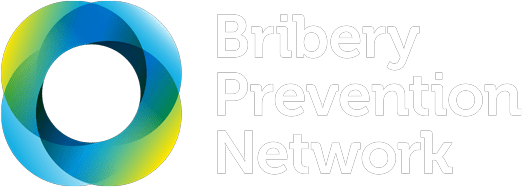This legislation proposes to strengthen Australia’s enforcement response to foreign bribery. It will introduce a new corporate offence for failure to prevent an associate (such as an employee, agent or subsidiary) from bribing a foreign public official and introduces a Commonwealth deferred prosecution agreement scheme for specified corporate offences related to bribery and other financial crimes.
Australian businesses operating overseas need to be aware of their obligations under Australian and foreign laws with respect to dealing with foreign public officials. Austrade has published an anti-bribery and corruption guide for Australian businesses operating overseas and information sheets that provide businesses with practical tips and risk assessment tools.
Identify red flags for bribery when dealing with business associates using the list of questions provided as part of Austrade’s anti-bribery materials. This resource will also support you to understand who is considered a business associate and how to manage any red flags and warning signs that are uncovered as part of your due diligence process. This resource forms part of Austrade’s suite of anti-bribery materials.
Whistleblowing and the corporate sector whistleblower protection regime in Australia
by Australian Securities and Investments Commission
This resource offers an introductory summary of corporate sector whistleblower protection requirements under the Corporations Act 2001. It includes links to further guidance for companies on handling whistleblower disclosures and creating whistleblowing policies. This guidance can be used by companies even if they are not required to have a whistleblower policy under the law.
This detailed instruction manual for investigating corruption allegations can guide you through the internal investigation process. It is designed for investigations in the public sector, but the same principles will apply for internal investigations of fraud or corruption issues in the private sector. The 'whistleblowing' section of this site provides up to date guidance on recent developments in obligations relating to whistleblowers.
CDPP and AFP Best Practice Guideline on self-reporting foreign bribery and related offending by corporations
by Australian Federal Police Commonwealth Department of Public Prosecutions
Self-reporting is a significant first step in addressing suspected foreign bribery. This Guideline is designed to provide companies with information about how self-reporting will be taken into account by the CDPP when determining whether or not to commence a prosecution, and highlights the reasons why a company may choose to self-report including to comply with directors’ duties and limit liability. Information about early guilty pleas is also provided.
This resource offers a road map for better corporate practice on anti-corruption disclosures. It demonstrates the business case for advancing corporate governance and transparency. Direction is provided for disclosure across five high risk areas. It responds to some of the legal challenges that might inhibit a business from disclosing information.
A resource on the process to use when commissioning independent assurance of anti-bribery programs. Provides benchmarks in the form of control objectives for use in designing and evaluating programs in anticipation of independent assurance. Includes clear step-by-step instructions broken into five stages.
Articulate company commitments and expectations by setting an anti-bribery and corruption (ABC) statement of intention. This resource suggests language and key points to include in an ABC statement of intention to support companies to communicate to internal and external stakeholders. This resource is provided as part of the Australian Government’s broader anti-bribery materials. This resource is part of Austrade’s “Guide to exporting”.
Address corruption in public infrastructure projects by applying this framework. Learn how data analytics can be used to monitor corruption risk across the project cycle. This resource includes a case study on creating a corruption risk index during construction of an international airport in Mexico City.
Parties to the OECD Anti-Bribery Convention, including Australia, are required to criminalise bribery of foreign public officials in international business transactions. This fact sheet provides short explanations of the OECD, the Anti‑Bribery Convention, how the Convention is monitored and background to Australia’s enforcement of the Convention.
This short, 15 minute learning module can be used by businesses to help develop employees’ awareness of the foreign bribery offence. The module provides information about Australia’s anti-bribery policy, relevant laws and how to report foreign bribery. It features video interviews with Australian Federal Police representatives, links to relevant agencies and a short quiz, and supports users with accessibility requirements.
Use this Word document template to quickly summarise results of risk assessments undertaken through compliance programs. Specific questions are provided to assess the risk of bribery and corruption for each country the business operates in, and sectors that may be more prone to bribery. This information can be used to identify risks and define business priorities. Download this risk assessment template from the GAN Compliance Program Guide.
OECD Convention on Combating Bribery of Foreign Public Officials in International Business Transactions
by Organisation for Economic Co-operation and Development
The OECD Convention on Combating Bribery of Foreign Public Officials in International Business Transactions is a legally binding instrument that criminalises bribery of foreign public officials in international business transactions. The Convention was strengthened by the 2009 Anti-Bribery Recommendation which established additional measures to prevent, detect and investigate foreign bribery. Published in five languages.
There are many layers to remediating bribery and corruption issues, including: identifying root causes, addressing weaknesses in systems and processes, imposing consequences on the people who have done the wrong thing, putting commercial relationships onto the right footing and paying reparations where appropriate. This incident response map works through some of the key issues related to a remediation response.
